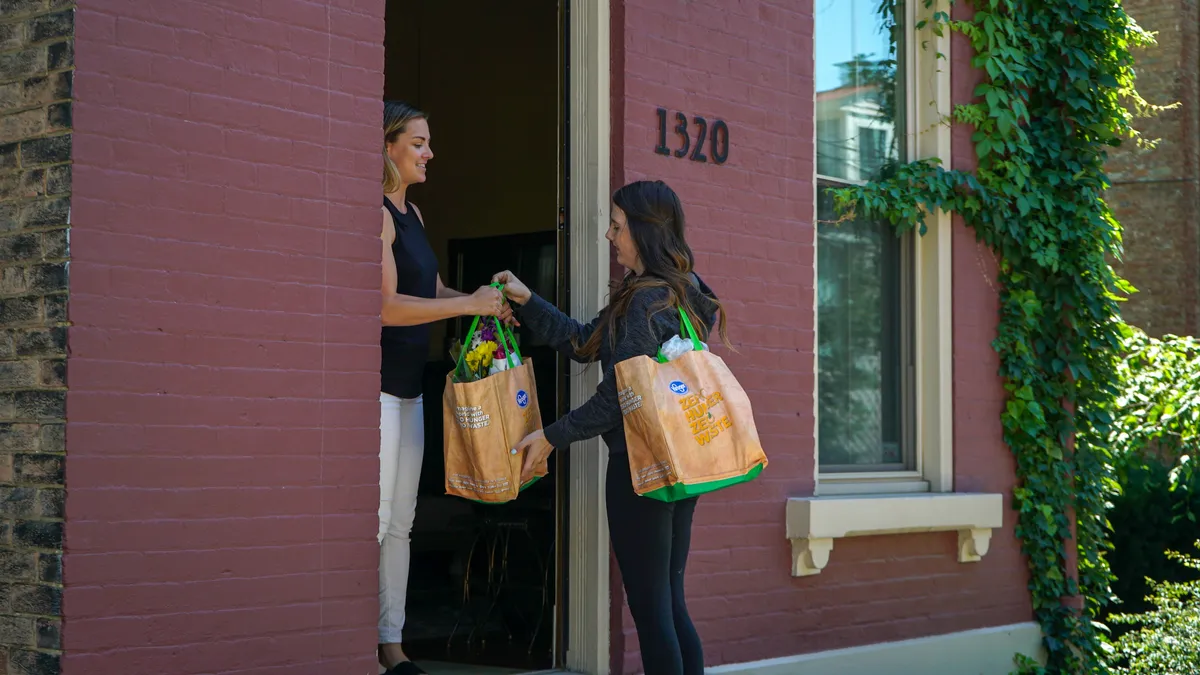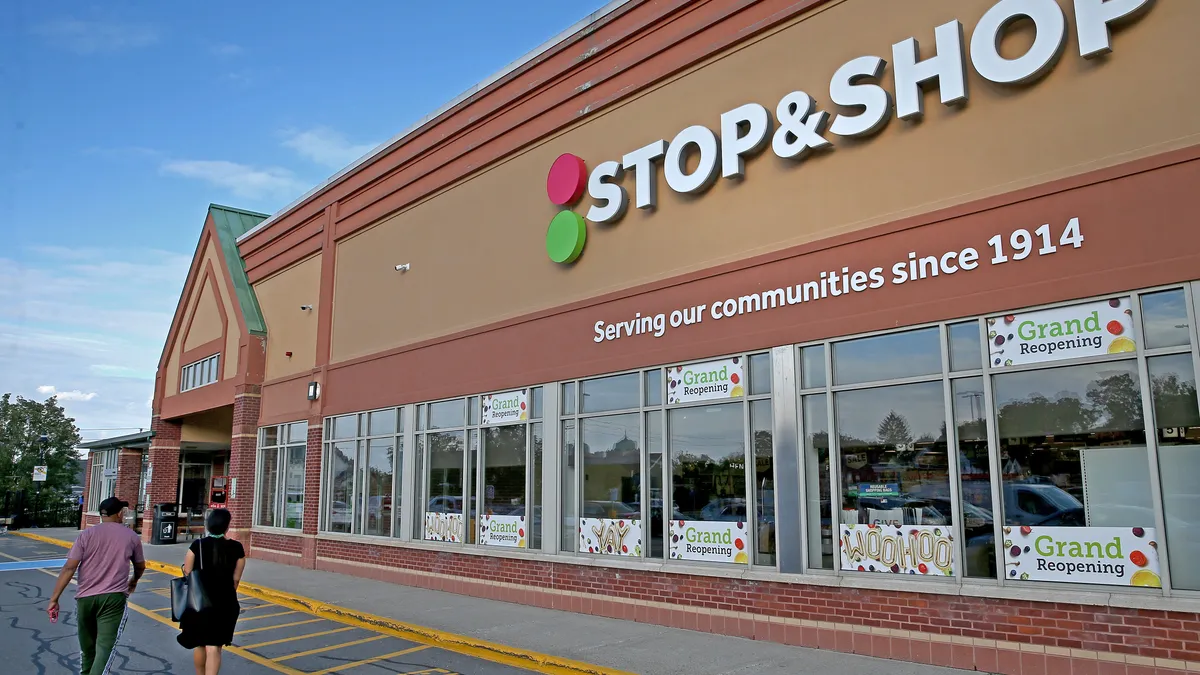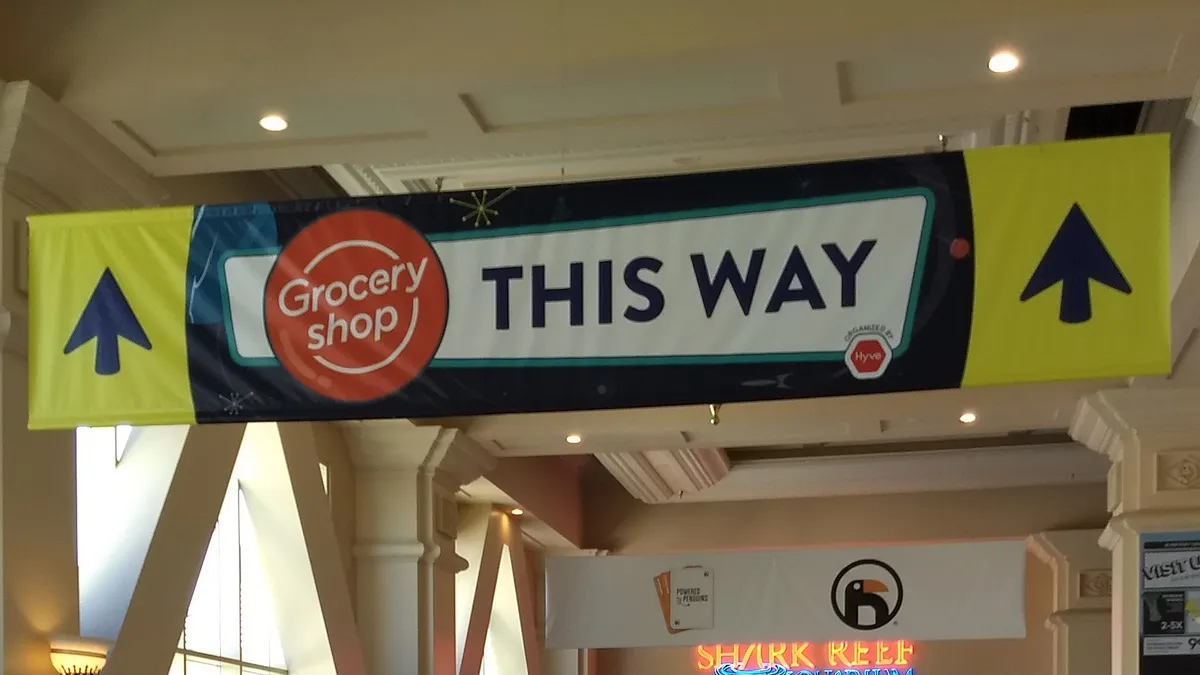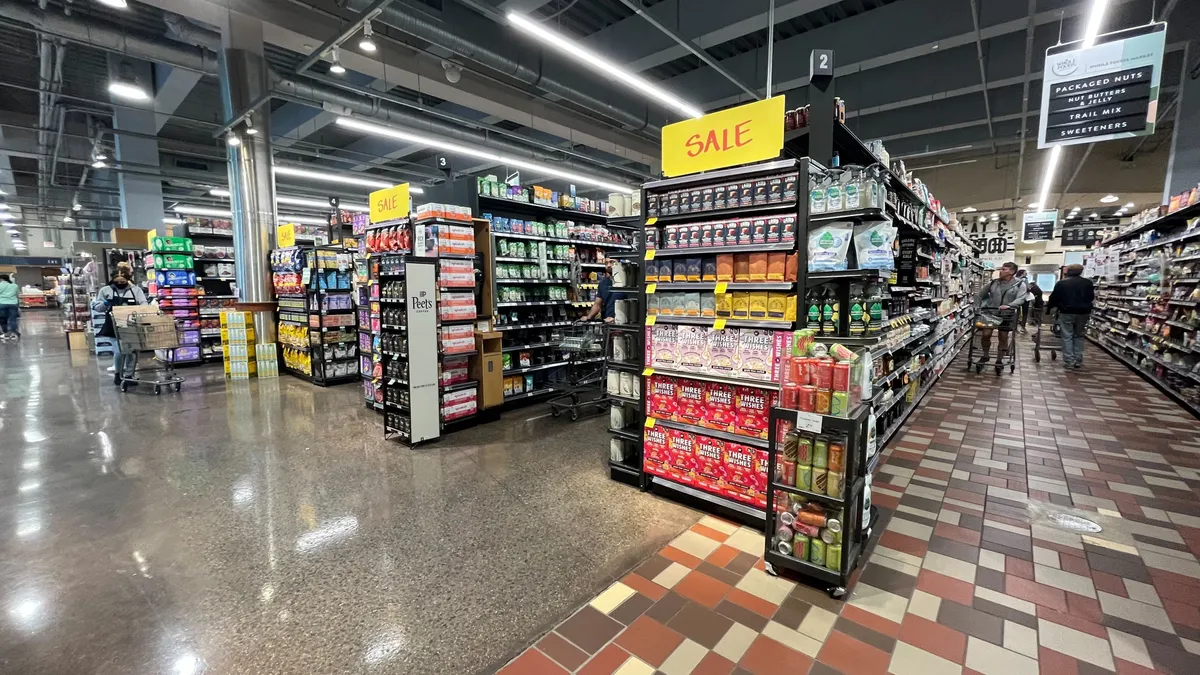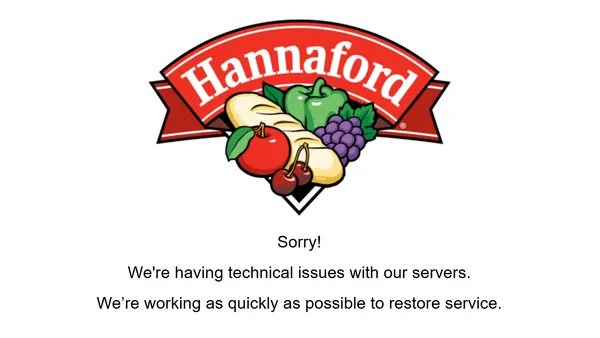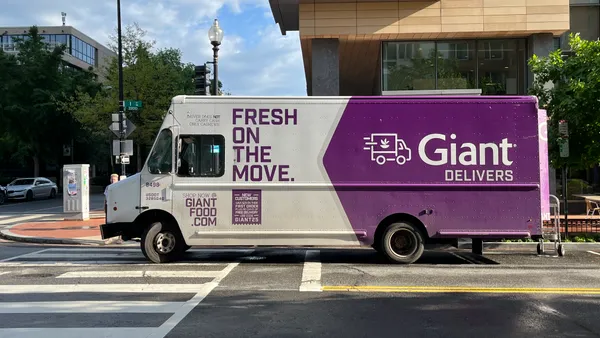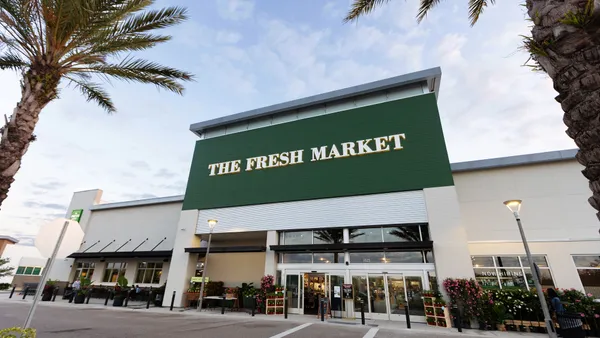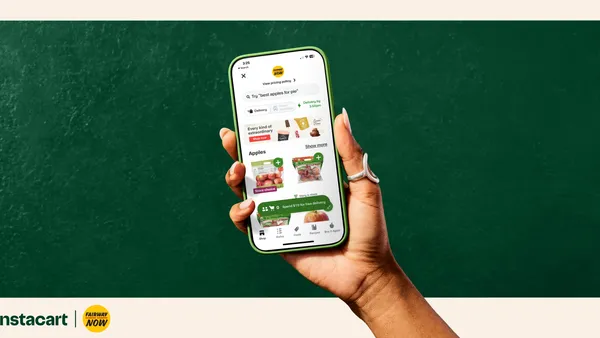Dive Brief:
- A new report from investment firm Moody’s cautions that it is unclear how much of the “ultimate cost of same-day delivery consumers will be willing to ‘subsidize'” and questions just how big the demand for same-day delivery really is. The firm examines the same-day delivery growth of grocery retailers including Walmart, Target and Amazon.
- Given these questions, in addition to the resources being dedicated to same-day delivery, the firm's lead analyst, Charlie O'Shea, believes that many retailers will “likely overspend” on these initiatives.
- Brick-and-mortar remains at an advantage, according to Moody’s, because of its ability to satisfy spontaneous and same-day purchasing in most markets.
Dive Insight:
The biggest question Moody’s asks in its report is, “at which purchase level the consumer will recognize that there is a compelling value proposition for this service?” For example, Target’s TriBeCa, New York, store charges $7 for same-day deliveries.
Finding the value sweet spot will likely depend on the market, and New York City is an interesting case study in the race for the same-day delivery crown as Walmart’s Jet, Amazon and FreshDirect chase fulfillment efficiencies. But New York – and its notoriously high cost of living – is hardly reflective of how the rest of the U.S. will respond to delivery fees, and the service could be hard to sell for $7 extra in middle America.
However, there are plenty of examples showing that consumers are indeed willing to pay a little extra for convenience. A recent report from Lux Research shows that, on average, consumers are willing to pay 11% more for each added layer of convenience in foodservice, including grocery delivery and restaurant takeout.
The challenge comes in projecting a return on investment in a competitive industry with razor-thin margins. At this point, adoption of online grocery shopping is moving slower than other consumer categories, according to NPD Group. Among the factors causing consumer reluctance are not being able to pick out their own fresh items, not wanting to pay a delivery fee and not feeling like the service – even same-day delivery – is fast enough.
But there is no doubt that consumer behaviors and expectations are changing. The online grocery industry is projected to reach $100 billion by 2025, with 70% of consumers expected to shop online. According to Andrew Lipsman, an analyst at eMarketer, the $700 billion food and beverage category currently sees less than 3% of sales occurring online. Same-day delivery will accelerate the channel shift, “bringing tens of billions of dollars online,” he said. According to eMarketer's research, 64% of consumers say they're interested in same-day grocery delivery and 19% say they've used the service.
Despite the caution expressed in the Moody’s report, big players are moving at a dizzying pace to expand same-day delivery and fulfillment centers in support of the service. Kroger’s partnership with Instacart has grown the grocer’s service to more than 1,600 stores, while Walmart and Whole Foods are rapidly deploying same-day delivery from their stores.
The number of U.S. internet users who used same-day delivery jumped to 31% in 2018, from 17% last year, with groceries leading the requests, according to a survey from shipping firm Dropoff cited by eMarketer. This indicates that delivery is here to stay and that customers are – to a point, at least – willing to “subsidize” the service. The grocery industry can’t afford to sleep on delivery, especially as foodservice competitors – namely restaurant chains – are pushing on the gas pedal.


